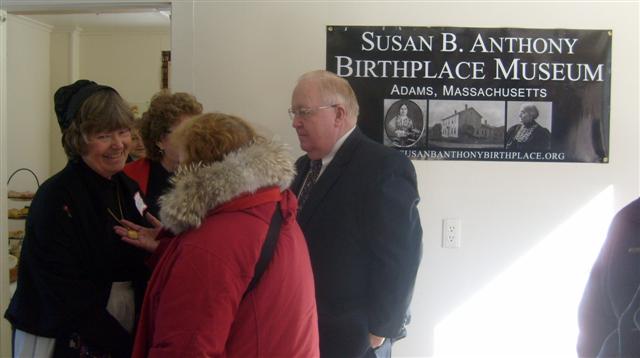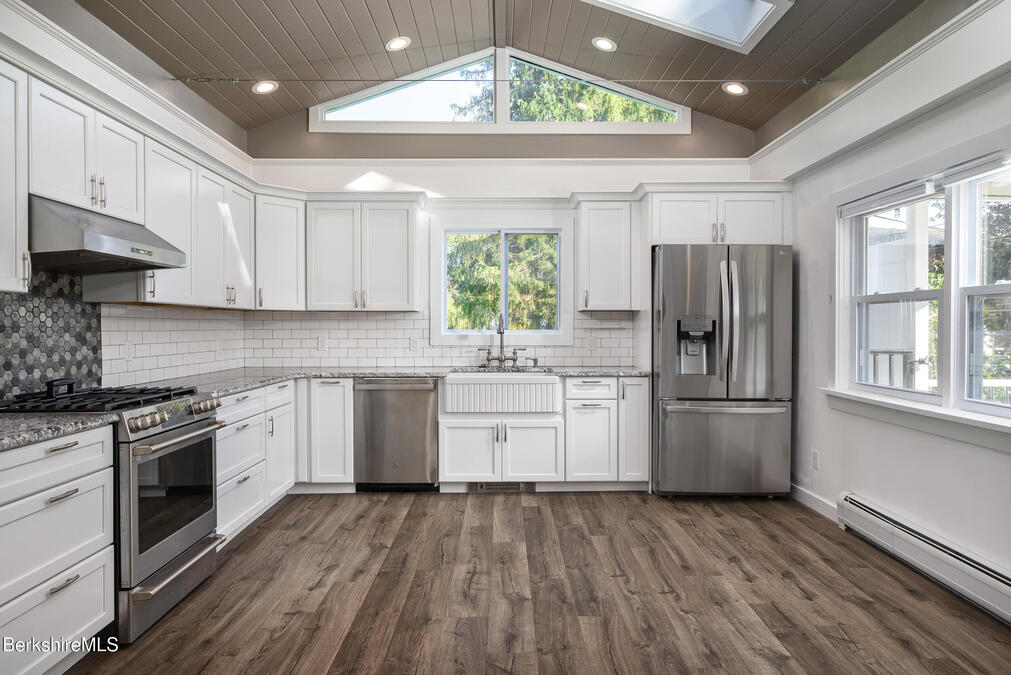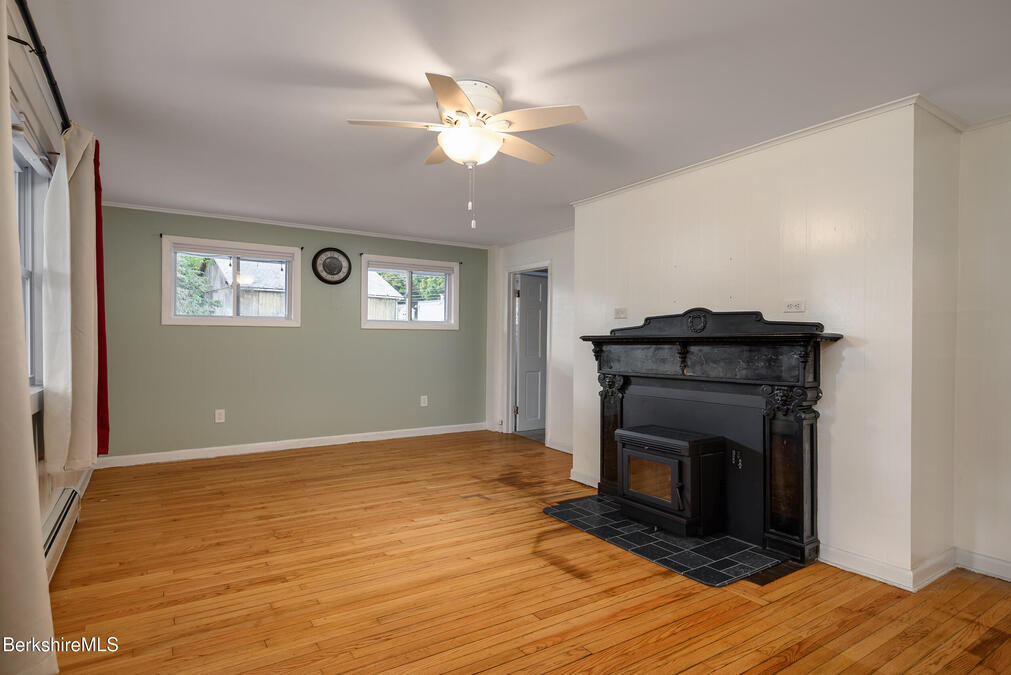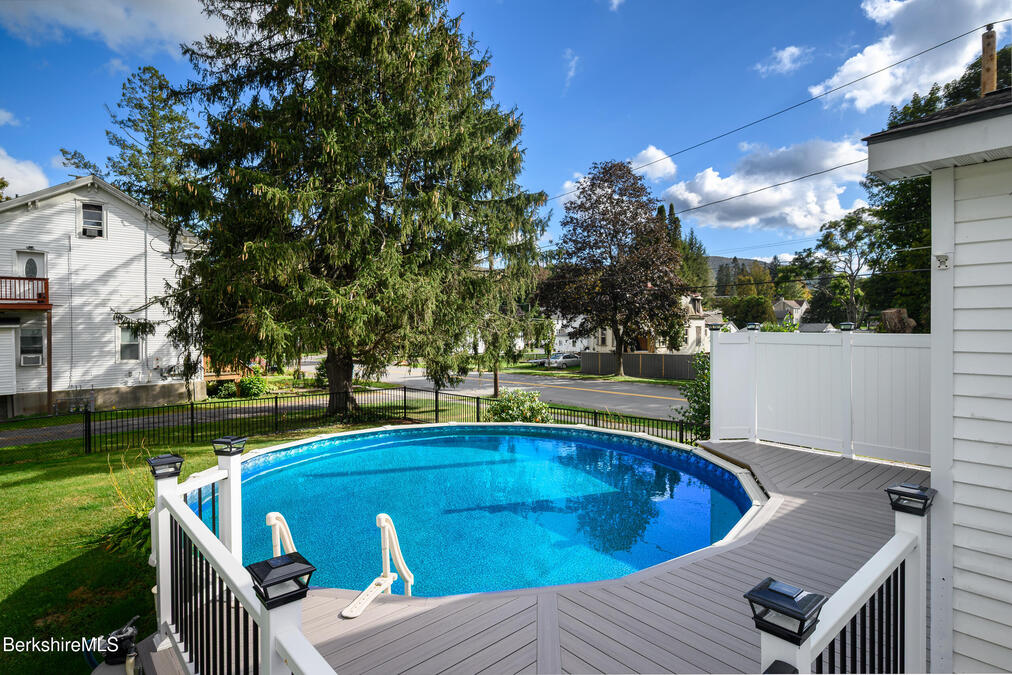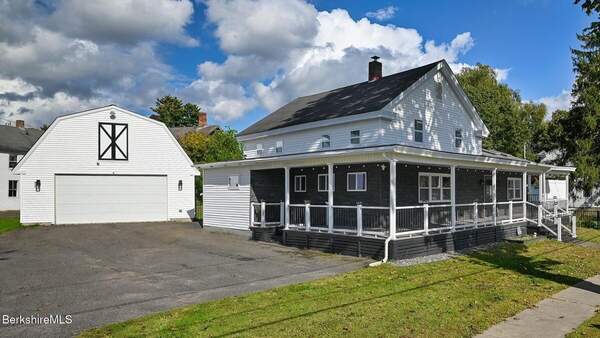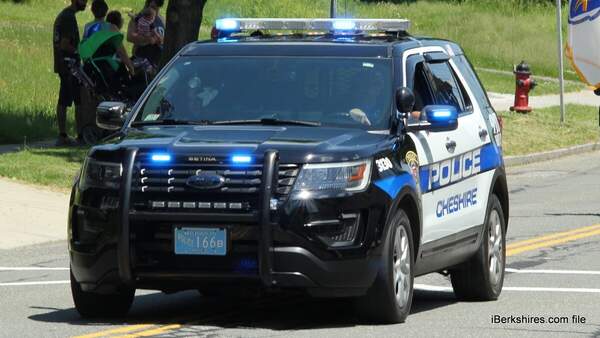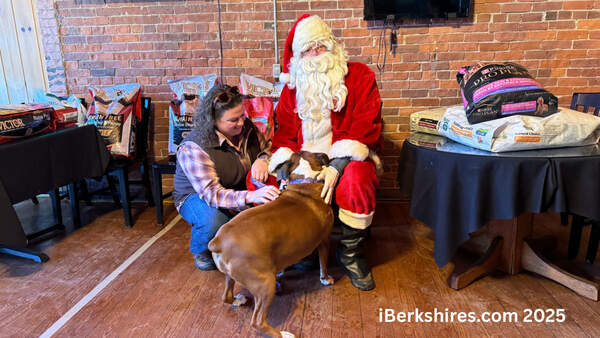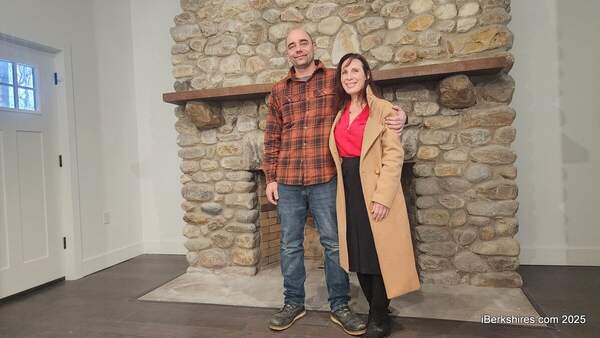
Susan B. Anthony's Birthday Marked by Open House at New Museum
.jpg)
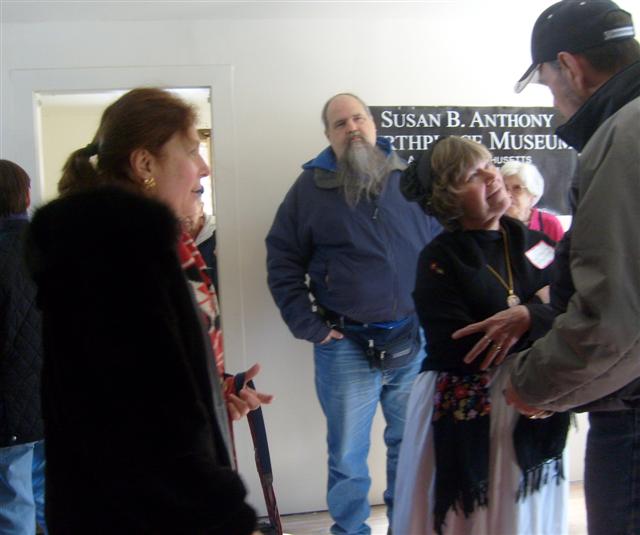
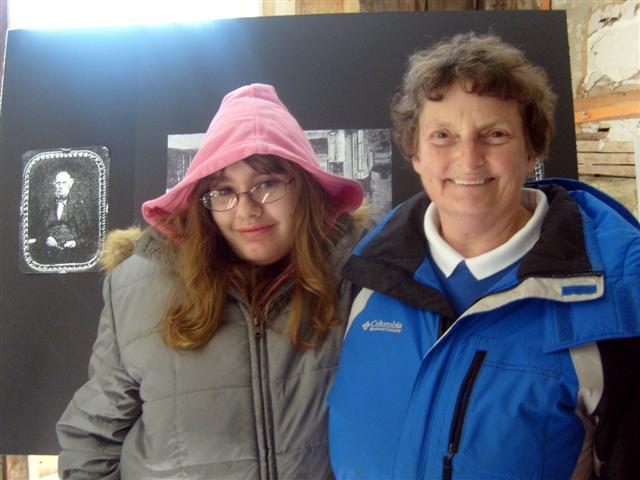
ADAMS, Mass. — Bella Richardson got used to strangers knocking on the door of her unassuming white clapboard house on East Road over the years.
"They'd ask to come in and look around," she said Sunday, standing in what was once the front parlor of the 200-year-old home. "But it was privately owned and there wasn't anything here to show them. So they'd ask if they could take pictures of outside. ... I'd get cards and letters thanking me for letting them take pictures."
Soon, those who make the pilgrimage along that back road in Adams will be able to go inside and stand in the same spot as Richardson — the room where Adams' most famous daughter had likely been born exactly 189 years before.
Women's rights advocate Susan B. Anthony spent her earliest years in the home her father, Daniel Anthony, built to house his family and store. She was born in the south parlor, likely the first-floor room that now looks out on East Road.
Anthony might recognize the layout of the center hall Colonial but not much more. The building passed from the Anthony family years ago. Several attempts have been made to turn it into a museum, including a stint in the 1930s and '40s, when it was operated by a Quaker society (the Anthonys were Quakers).
The latest effort is being undertaken by Carol Crossed of New York, who purchased the property in 2006. She and a group of dedicated volunteers have been working to bring the Susan B. Anthony Birthplace and Museum to life.
A couple hundred people packed into the small rooms of the four-bedroom home over several hours on Sunday to see how far the nonprofit group has come.
Crossed said it was hoped to open the museum on Sunday, Anthony's birthday, but the final phase of the project to restore the first floor as it was in Anthony's childhood still has months to go.
Holes were poked in the ceiling and wallpaper of 1970s vintage (with fondue pots) peeked through partially stripped walls and untrimmed windows looked out in the yard.
Crossed said 25 paint samples had been taken from the walls as part of the research to bring the house close to its original condition. That will include what Daniel Anthony may have sold in his store, like the whole cloth he manufactured, lime for outhouses, possibly crops from his garden and, at one point at least, whiskey, which landed him in trouble with his Quaker brethren.
A lot of effort is going into determining what the house originally looked like and how it was lived in by the Anthonys
"We're letting this house tell us. We can't tell the house," said Crossed, who is shooting for a July opening. "We can't come in and assume things. We have to go very slowly and let it speak to us."
It won't be an exact restoration, said Lorraine Robinson, a member of the museum's board, because the house will have modern elements of electricity and central heating. But elements from Anthony's childhood era will be conspicuous, such as the 19th-century, wavy handmade glass panes restored in the six-over-six windows.
Still, the museum hopes to reinstall a hearth and oven, at which Anthony would help her mother, Lucy, bake a dozen loaves a day to feed the workers in her father's textile mill, the first to manufacture whole cloth. Daniel Anthony made the woolen cloth in a mill along Tophet Brook across East Road from the house and sold it — likely in bolts — along with the other products in the first-floor rooms.

The family lived upstairs along with boarders, including a teacher who taught young Susan to read and write at age 3 in trade for room and board.
The four upstairs rooms have been converted into an office and rooms for a live-in caretaker. The upstairs renovations were part of the first two phases of the project over the past year that stabilized the house, replaced rotten sills and the roof and tore off an added closed-in porch off the kitchen entrance.
About $145,000 has been spent to date; Crossed estimated another $110,000 to complete the first floor. Lastly will be site development for a visitor's center and parking area. While there have been a number generous contributors, most of the fundraising has been in small amounts from many.
 .jpg) Former occupant Bella Richardson recalled how people would stop and take pictures - and ask to come inside. Above, a shot of a picture-taker from the attic window. Former occupant Bella Richardson recalled how people would stop and take pictures - and ask to come inside. Above, a shot of a picture-taker from the attic window. |
Compared with other museums, the 1,900 square-foot Anthony birthplace is modest in scale and cost. It seems appropriate since the Quakers valued plainness.
"This is very sustainable, there's a simplicity about it," said Crossed. "So it's very exciting in that regard. We think it's very manageable ... Yet, the significance of this museum is so much greater than the simplicity."
Anthony left the Mother Town at age 6 when her family moved to western New York. She spent the rest of her life in Rochester and is buried there.
That didn't mean she forgot her hometown. Roy Thompson recalled his mother's story of her encounter with the well-known agitator as she knocked on doors along North Summer Street. It was likely around 1897, the last year Anthony was believed to visit Adams; Thompson's mother was no more than 4 herself.
"Her mother told her to stay away from her," Thompson said. "My grandmother said, 'Don't go near her, she's trouble.'"
The suffragette, abolitionist and temperance advocate ruffled more than a few feathers in her lifetime. But, while still connecting Anthony to her later life's work (Crossed has one of the largest collections of Anthony's newspaper The Revolution), the museum will concentrate on her childhood from 1820-1826, the Quaker values instilled in her and the entrepreneurial father who ensured his daughter's education in a time when domestic arts was considered more important for girls than reading and writing.
and the same law of progress makes the woman of today a different woman from her grandmother."
In fact, Daniel Anthony may have played an even more significant role in women's rights than educating a future revolutionary. His whole cloth mill released women from the loom and allowed them more time for recreational and social sewing experiments.
"That was the birth of the reform movement," said Crossed. "The men went to the bars to talk but the women found a social context for their sewing and their housekeeping experience and they started to talk and realized their experiences were similar."
No doubt young Susan also enjoyed the forestland, meadows and brook at the old house, as generations of later children did.
Richardson and her family moved into the house in 1948, buying it from the last member of the Quaker society. She would raise her three sons there and spend more than three decades in the house before selling it in the 1980s.
"The kids loved it," she said. "It was a great place to raise a family."
Florence Armstrong's grandparents Emma and Louis Briggs rented the home back in the 1920s. Armstrong had often heard from her father and aunt of their years there before moving to Florida Mountain.
"I just heard of all the wonderful memories, it was always 'it was the Susan B. house where we lived,'" she said. "They had such a good childhood."
For Armstrong's granddaughter Samantha McVinney the house has a personal significance as part of her family history, the region's history and, most importantly, as Anthony's birthplace.
"If it wasn't for her, women probably wouldn't be free today," she said
Tags: historic structure, museum, Susan B. Anthony,

